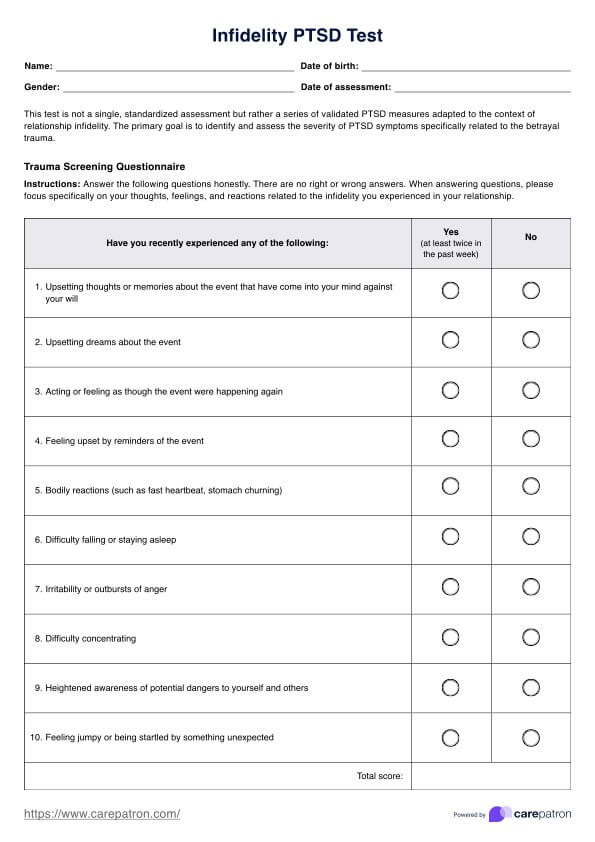Post-infidelity stress disorder (PISD) is a condition where individuals experience significant emotional and psychological distress following the betrayal of a partner’s infidelity, similar to PTSD.

Infidelity PTSD Test
Discover how to assess the emotional impact of infidelity on your clients with our Infidelity PTSD Test.
Use Template
Infidelity PTSD Test Template
Commonly asked questions
The test assesses the emotional impact of infidelity through a series of tests. It identifies symptoms like intrusive thoughts and emotional distress, providing a score for each test that can reflect the severity of these symptoms.
No, it should not replace professional psychological assessment and therapy, but it can serve as an initial step to understanding the impact of infidelity and guide further action.
EHR and practice management software
Get started for free
*No credit card required
Free
$0/usd
Unlimited clients
Telehealth
1GB of storage
Client portal text
Automated billing and online payments











